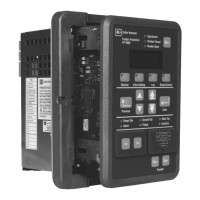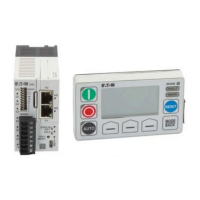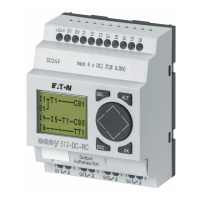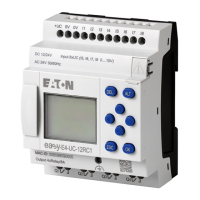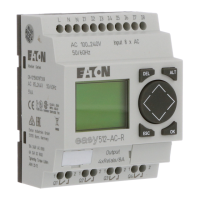I.L. 17562
Page 59
PR 0.3 Effective 8/99
5.7 Page 7, SP DI 2 — This page contains the single setpoint which configures Discrete Input 2
(DI 2). The input must be a 120 Vac signal. A 120 Vac source for wetting dry contacts is
provided on the MP-3000 terminal block. Refer to wiring diagrams in Section 6.
5.7.1, Setpoint P7L1 (INC SEQ, REM RST, REM TRIP, DIF TRIP, MTR STOP, RST DBL, or
EMG OVR) — If the incomplete sequence function INSQ is on and set for some time delay
(P5L8), then DI 2 is automatically configured to control incomplete sequence timing, INC SEQ,
and no other setting is possible.
If INSQ is turned OFF, the other choices for DI 2 are available. These are the same choices as
for Discrete Input 1, P6L1, Section 5.6.1 just above.
5.8 Page 8, SP AREL, Setpoints P8L1 to P8L22 — Use this page to configure which events
activate the alarm relay.
The factory default setting is for every alarm event to activate the alarm relay; and for the alarms
to reset automatically when the condition disappears. Trip events do not activate the alarm
relay; nor does Time Between Starts blocking, which frequently goes true during normal
operating cycles. Check the setpoints to be sure they agree with factory defined values (see
column in Table 4.3) or change as needed.
NOTE
Even though a particular alarm condition is directed to the alarm relay on this page, it can
function only if it is turned on in the SP ALARM Page 4.
Setpoints control the following 22 alarm assignments. Any or all can be turned OFF:
• Ground fault alarm, or trip
• I
2
T alarm, or trip
• Jam alarm, or trip
• Underload alarm, or trip
• Phase unbalance alarm, or trip
• Winding temperature alarm, or trip (with URTD)
• Motor bearing temperature alarm, or trip (with URTD)
• Load bearing temperature alarm, or trip (with URTD)
• Auxiliary temperature alarm, or trip (with URTD)
• Starts per time alarm, or trip
• Time between starts trip
• Individual RTD channel failure alarm
• URTD overall communications failure alarm
• IOC trip
• Phase reversal trip
• Incomplete sequence trip
• Remote trip (via discrete input)
• Differential trip
• INCOM (data communications) trip
• Transition trip
• Zero speed switch trip
• Trip bypass (contactor fails to interrupt current after trip)
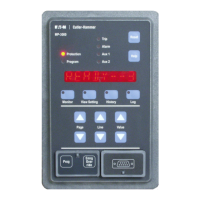
